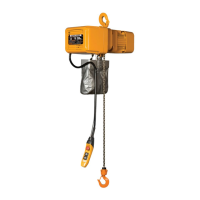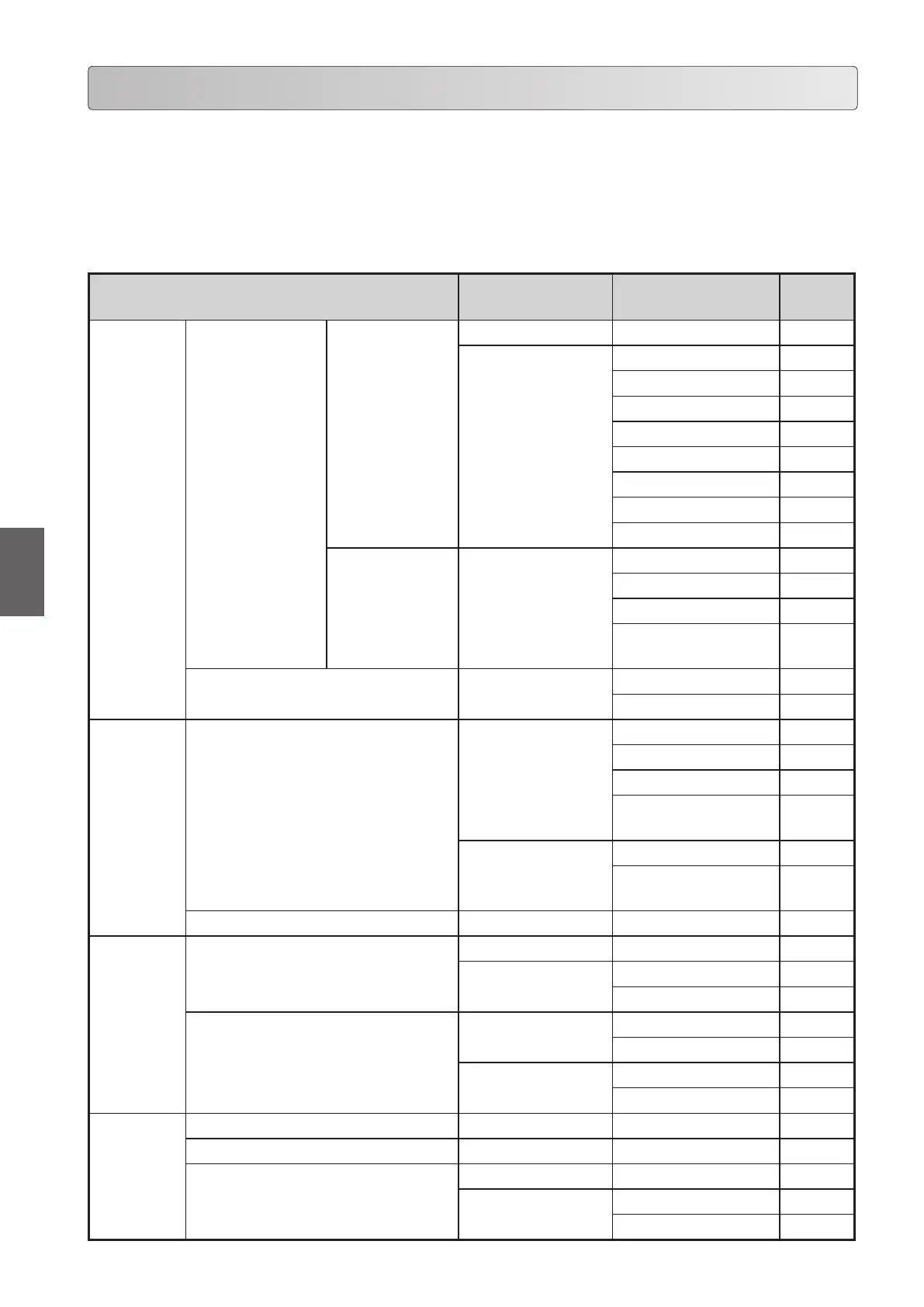94
Guidance on Troubleshooting
Conditions
Main fault
contents
Check item
Reference
page
Electric chain
hoist does not
operate without
load
Sounds no brake
operating sound
Sounds no
Electromagnetic
contactor operating
sound
Improper source voltage Power 99
Breakage or burning of
control circuit
Faulty electrical part
Circuit breaker 99
Power Cable 100
Internal wiring 102
Electromagnetic Contactor 105
Transformer 104
Fuse 105
Upper/Lower Limit Switch 106
Push Button Switch 107
Sounds contactor
Electromagnetic
operating sound
Breakage or burning of
power circuit,
Faulty motor or brake
Motor 101
Brake 102
Internal wiring 104
Electromagnetic Contactor
(melted contact points)
105
Sounds brake operating sound Breakage of driving part
Sticking of Bearing
Gears and Joints 115
Bearing 116
Electric chain
hoist operates
without load
Does not operate with a load
(Motor sounds howling)
Open phase
(single phase operation)
Power 99
Power Cable 100
Motor 101
Electromagnetic Contactor
(melted contact points)
105
Overload
(clutch activated)
Friction Clutch 109
Friction Clutch with
Mechanical Brake
110
Operates slowly with a load Voltage drop Power Cable 100
Operates
differently from
the indication
of the Push
Button Switch.
Operates differently from the indication of the
Push Button Switch
(operates in the opposite direction)
Negative phase connection
Power Cable 100
Wrong connection Internal wiring 104
Push Button Switch 107
Does not operate when operating any one of
the Push Button Switch
Breakage of control
circuit
Internal wiring 104
Push Button Switch 107
Faulty electrical part Electromagnetic Contactor 105
Upper/Lower Limit Switch 106
Does not stop
normally.
Does not stop even if the Push Button Switch is released.
Melted contact point Electromagnetic Contactor 105
Too long (or short) stopping distance Abrasion of brake lining Brake 102
Does not stop at the upper/lower limit.
Negative phase connection
Power Cable 100
Wrong connection Internal wiring 104
Push Button Switch 107
Chapter 3 Troubleshooting
■
Single speed model
■
Guidance on Troubleshooting
Following table is the summary of the main failure causes based on the failure conditions and their inspection items.
Refer to the page of each item for the check method, treatment and the details of countermeasure.
• Refer to “Technical Materials” (P122) for the product structure and the component name of each part.
3
Guidance on Troubleshooting / Single speed model Guidance on Troubleshooting

